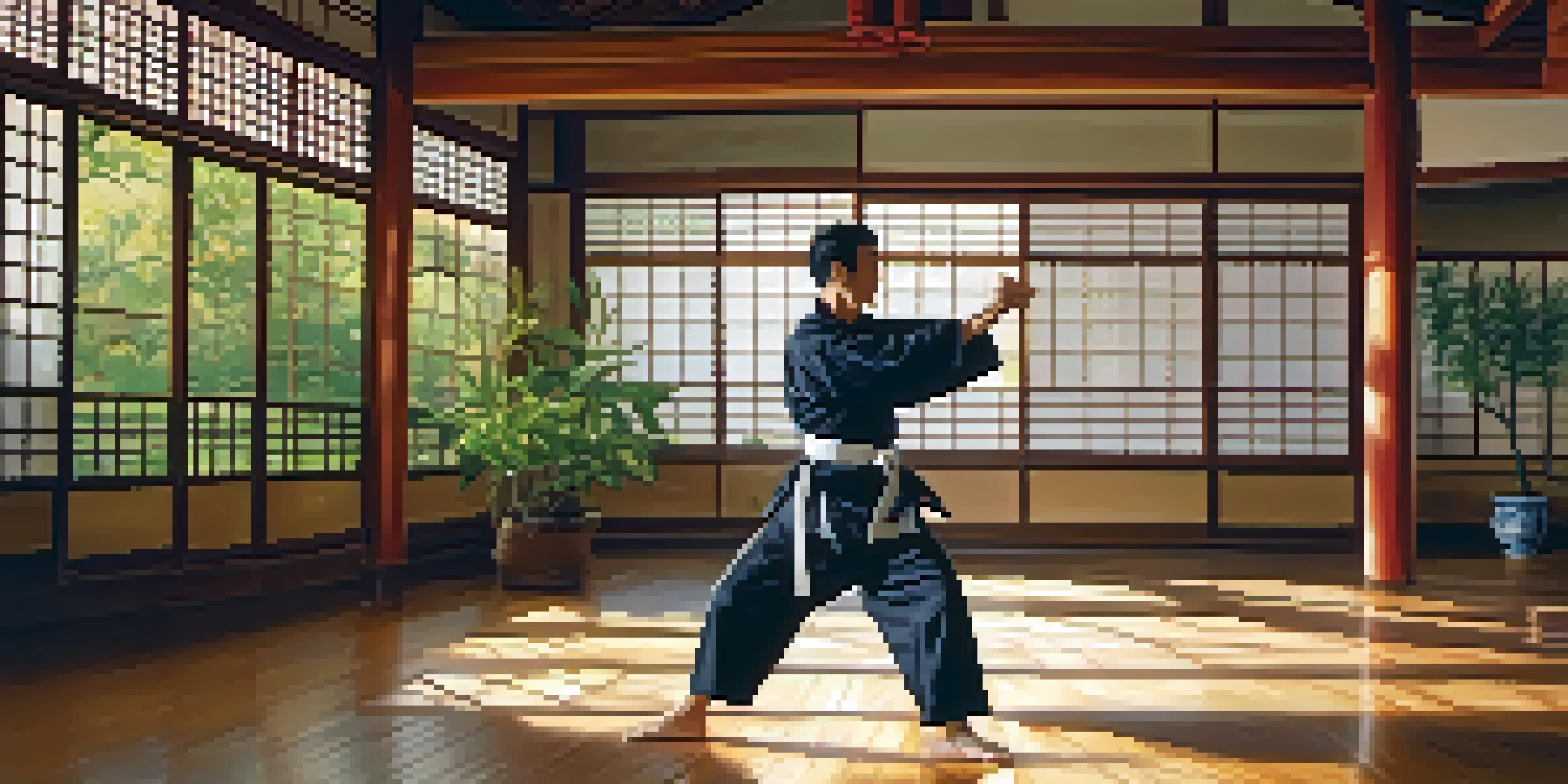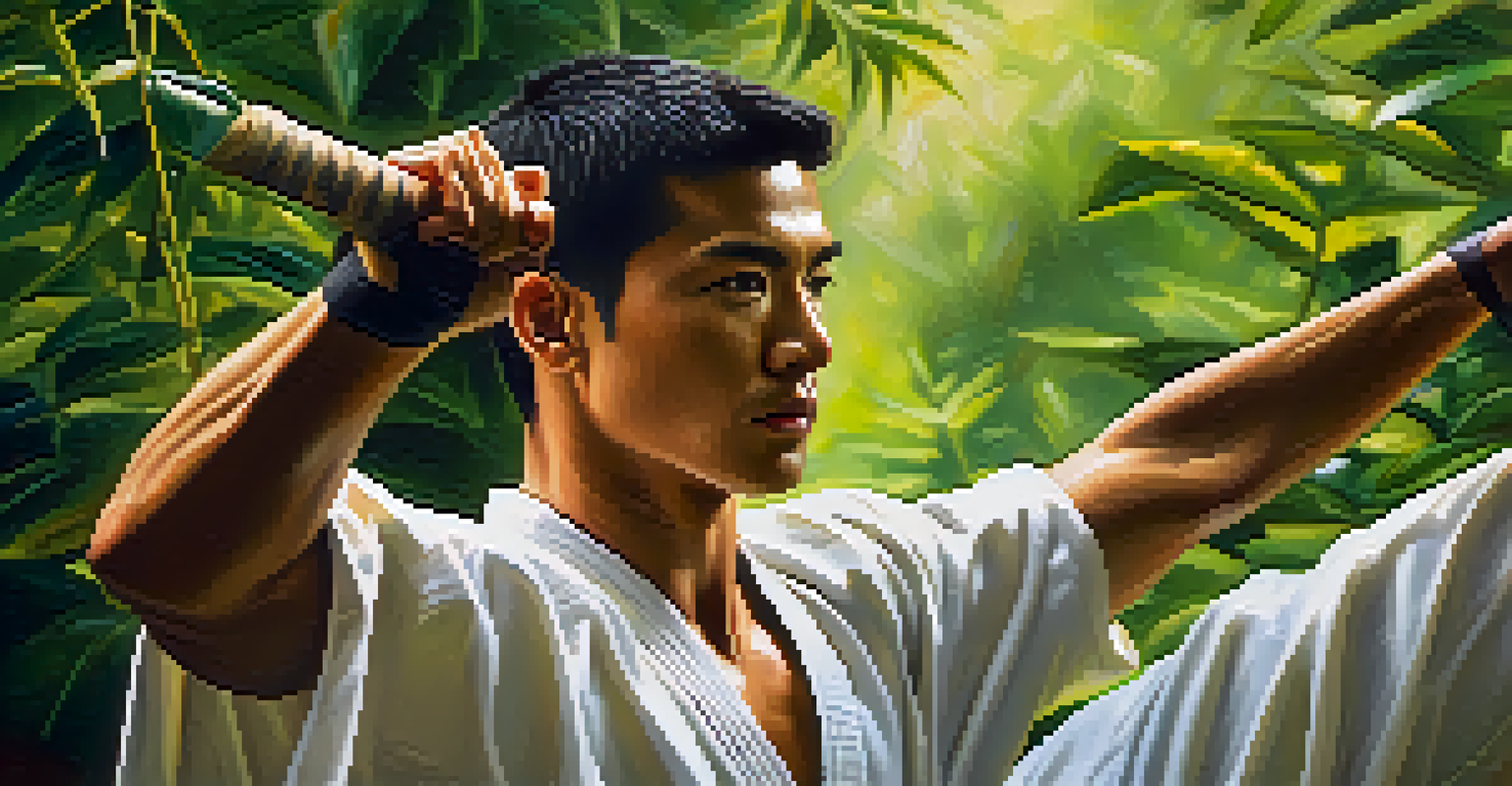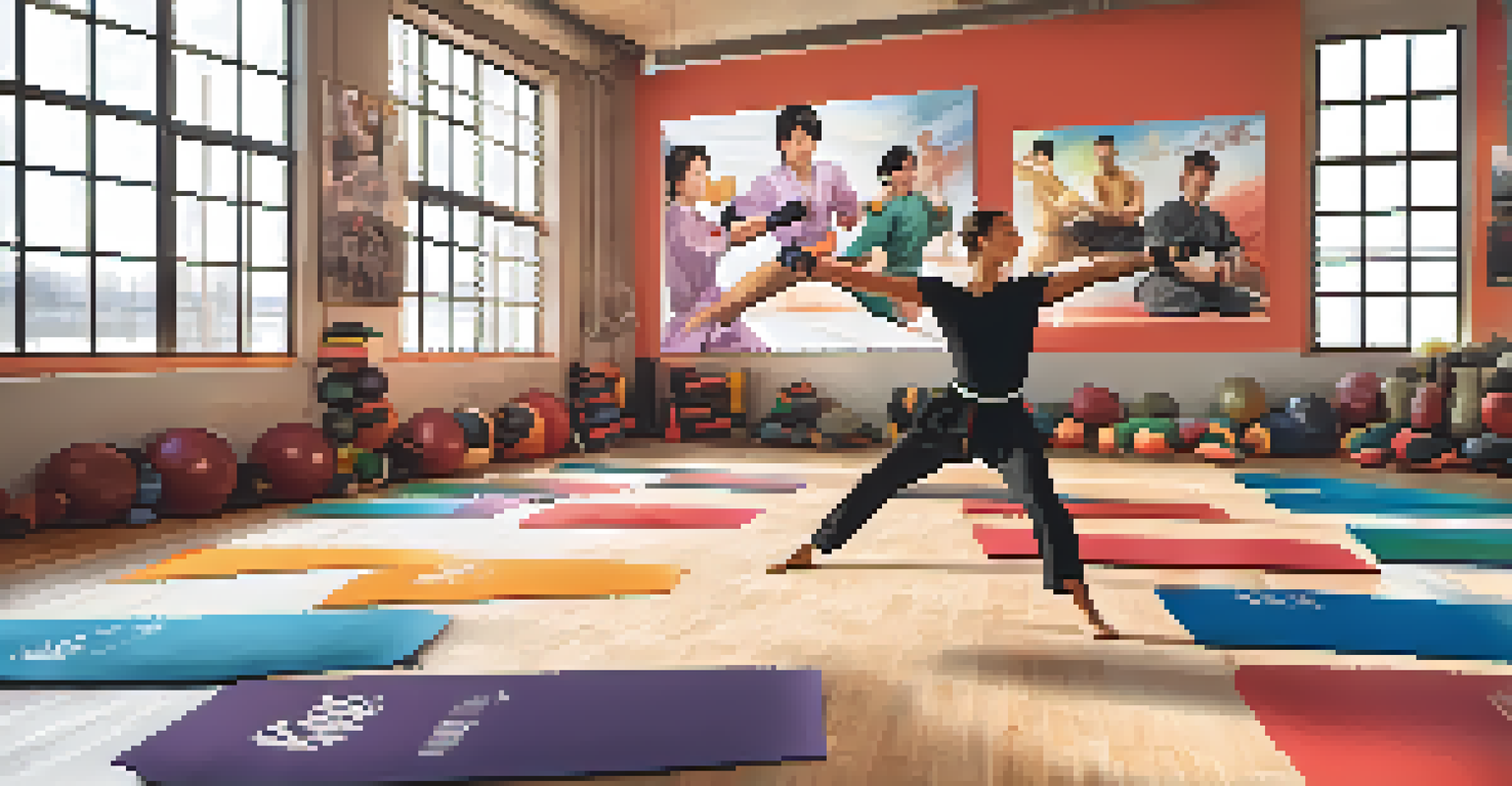Understanding the Importance of Stretching in Martial Arts Safety

Why Stretching is Essential for Martial Artists
Stretching is a fundamental practice in martial arts, as it helps improve flexibility and range of motion. This is crucial for executing various techniques safely and effectively. Without adequate flexibility, martial artists may risk injuries during intense training sessions or competitions.
Flexibility is the key to stability.
Moreover, stretching prepares the body for physical activity by gradually increasing blood flow and oxygen to the muscles. This process not only enhances performance but also reduces the likelihood of strains or sprains. Think of it as warming up a rubber band; the more you stretch it, the more it can handle without breaking.
Incorporating stretching into your routine establishes a habit that promotes overall well-being. A consistent stretching regimen can also contribute to faster recovery times after training, allowing martial artists to return to their practice with renewed energy.
Benefits of Dynamic Stretching Before Training
Dynamic stretching involves moving through a range of motion, which is particularly beneficial before martial arts training. This type of stretching prepares the muscles and joints for the specific movements that will be executed during practice. For example, leg swings and arm circles can enhance mobility and coordination.

By engaging in dynamic stretches, martial artists can elevate their body temperature and increase heart rate, signaling the body that it’s time to perform. This not only enhances physical readiness but also mental focus, setting the stage for a productive training session.
Stretching Enhances Flexibility
Regular stretching improves flexibility and range of motion, which is essential for executing martial arts techniques safely.
Additionally, dynamic stretching can help in activating the core and stabilizing muscles, which are essential for maintaining balance and control during martial arts maneuvers. This preparation can minimize the risk of falling or losing control while practicing complex techniques.
The Role of Static Stretching in Recovery
Static stretching, where you hold a stretch for a period, plays a crucial role in post-training recovery. After an intense martial arts session, static stretches help to relax the muscles and improve flexibility. This can lead to better overall performance in future training sessions.
Flexibility is the key to stability.
Holding stretches for longer durations allows the muscles to lengthen and can alleviate tightness that may have developed during practice. It’s akin to letting a tight spring unwind; it restores the muscle to its original state, reducing soreness and stiffness.
Moreover, static stretching can enhance blood circulation, which aids in the recovery process. By promoting better blood flow, martial artists can benefit from quicker nutrient delivery to the muscles, helping to repair any damage incurred during training.
Injury Prevention Through Stretching Techniques
Injury prevention is a top priority for martial artists, and effective stretching techniques can significantly reduce the risk of injuries. Regular stretching improves muscle elasticity, allowing for smoother, more controlled movements. This is particularly important in martial arts, where sudden, explosive actions are common.
Incorporating targeted stretches for specific muscle groups can also address imbalances and weaknesses that might lead to injuries. For instance, focusing on hamstring and hip flexor flexibility can prevent strains that are often seen in practitioners who kick frequently.
Dynamic Stretching Boosts Performance
Incorporating dynamic stretching into training prepares muscles and joints, enhancing both physical readiness and mental focus.
Moreover, stretching can enhance proprioception, which is the body's ability to sense its position in space. This increased awareness can help martial artists avoid awkward positions that may result in injury during sparring or drills.
Finding Balance: Stretching and Strength Training
While stretching is essential, it should be balanced with strength training for optimal martial arts performance. Strength training builds the muscle power necessary for executing techniques effectively, while stretching ensures those muscles remain flexible. Together, they create a well-rounded fitness routine.
Focusing solely on either strength or flexibility can lead to imbalances in the body, making a martial artist prone to injuries. For example, strong but tight muscles may restrict movement, while overly flexible muscles without strength can lead to joint instability.
Integrating both stretching and strength training into your routine allows martial artists to maximize their potential. It leads to improved performance, enabling practitioners to execute techniques with both power and precision.
Creating a Personalized Stretching Routine
A personalized stretching routine can cater to individual needs and goals in martial arts. Each martial artist may have different flexibility requirements based on their style and personal limitations. Therefore, crafting a routine that addresses these unique aspects can enhance effectiveness.
Begin by assessing your current flexibility levels and identifying areas that require improvement. You may notice that certain muscle groups are tighter than others, and focusing on these areas can yield significant benefits. For example, if you struggle with high kicks, prioritize stretching your hamstrings and hip flexors.
Stretching Aids Recovery and Balance
Static stretching post-training helps relax muscles, improve recovery, and promotes a balanced fitness routine with strength training.
Additionally, consider consulting with a coach or experienced practitioner to develop a routine that complements your training. Having a structured plan can keep you accountable and motivated, making stretching an enjoyable and integral part of your martial arts journey.
The Mental Benefits of Stretching in Martial Arts
Stretching isn’t just about physical benefits; it also contributes to mental well-being. The meditative aspect of stretching can help martial artists focus their minds, reduce stress, and enhance concentration. This mental clarity is vital during training and competition.
Engaging in a regular stretching routine can create a sense of mindfulness, helping practitioners to connect with their bodies. This connection can improve performance as martial artists become more aware of their movements and breathing.

Moreover, the calming effects of stretching can foster a positive mindset, which is essential for overcoming challenges in martial arts. By incorporating stretching into their regimen, martial artists can cultivate resilience both physically and mentally.